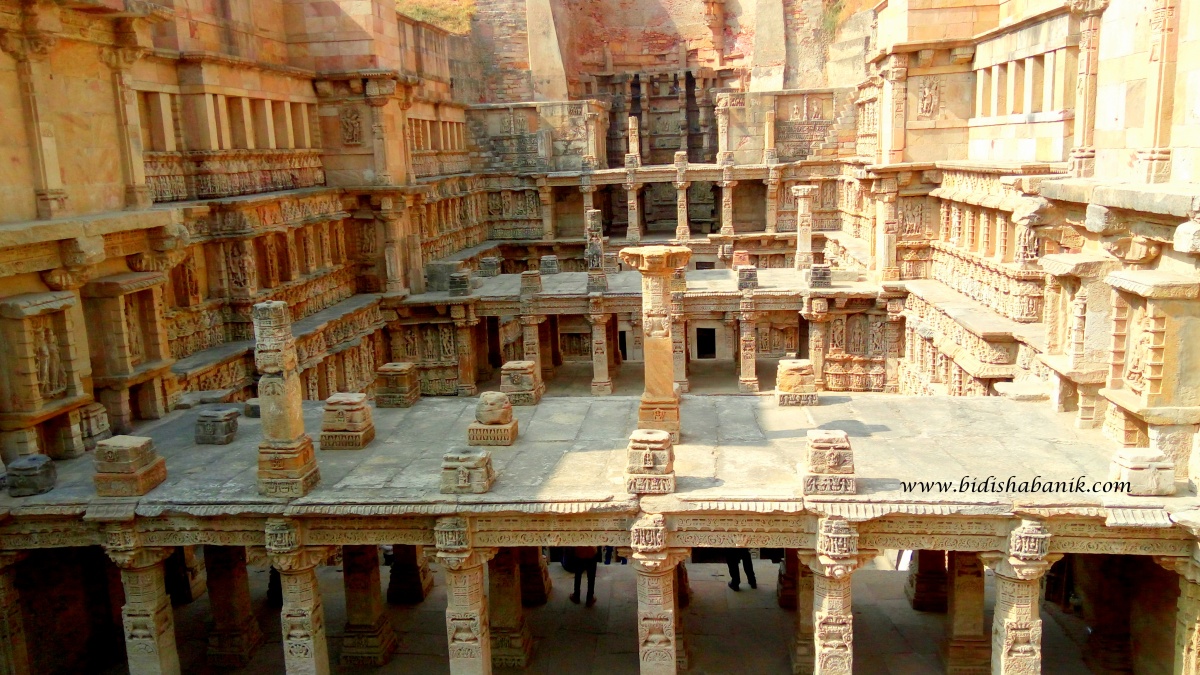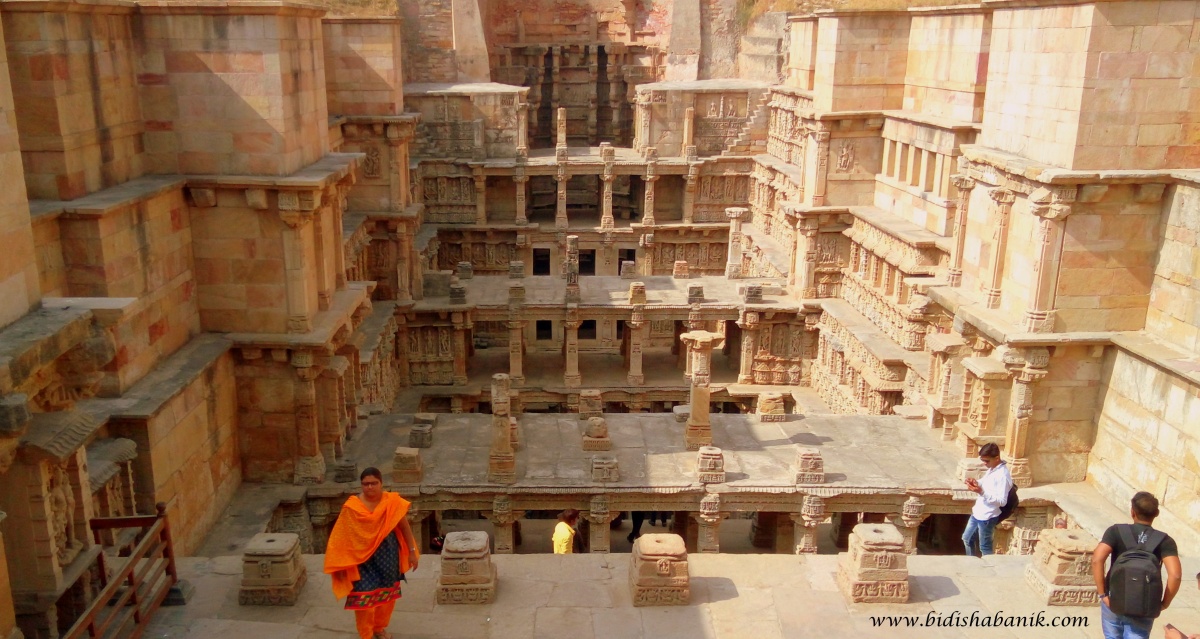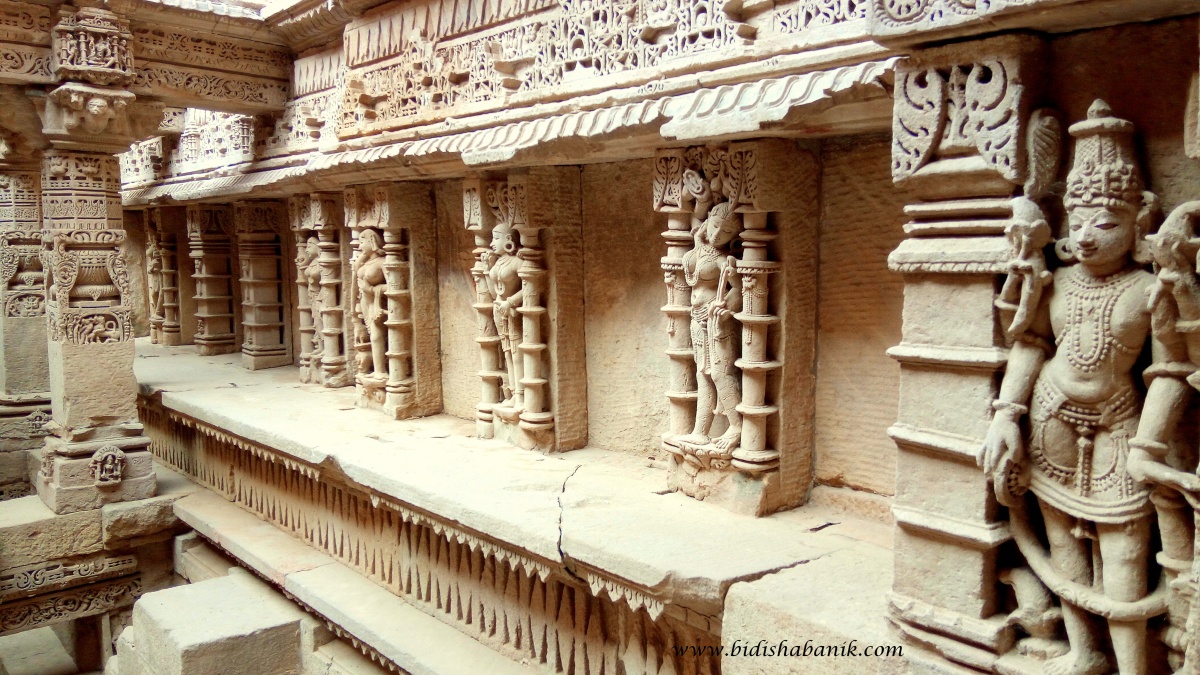Rani ki Vav- Where time stood still.

And once in a while time comes to a standstill,
For a soul that has never caved in
For before my eyes stood a wonder downhill
That unearthed a whole world of labyrinth
They say it’s a step well
And is called Rani ki Vav
For me it was a never-ending magical spell
And I call it Wow!
Such is the splendour of this architectural marvel called The Rani ki Vav tucked away in the hinterland of Patan in Gujarat. The mesh of intricate architecture that this stepwell flaunts accompanied by an intriguing history has given it the status of a UNESCO World Heritage site.
In fact, Gujarat has many such stepwells called Vav and these are all architectural marvels. Adalaj ni Vav or the Adalaj Stepwell is another such masterpiece near Ahmedabad that showcases a fine amalgamation of Indo-Islamic style of architecture. The Dada Hari ni Vav or the Mata Bhavani ni Vav are other such architectural gems that are a must-visit when you are in Gujarat.
History
Rani ki Vav roughly translates to the Queen’s Stepwell and is believed to have been built by Rani Udayamati in memory of the king Bhimdeva-I and dates back to the 11th Century. The architecture is representative of the Maru- Gurjara style.

The immaculate architecture at every level of the step well.
Built on the banks of the River Saraswati, it is believed that the source of water in this step well during earlier times was the River Saraswati itself. However, now the water that is present in the deepest layers of the stepwell are remnants of the rain water.
It is also said that this stepwell was buried for years and not a single soul in the vicinity of this area knew of its existence. It wasn’t until the 1960s that the Archeological Survey of India conducted excavations in this region to unearth this architectural masterpiece.

The view from the top.
The River Saraswati flooded and is supposed to have covered the entire stepwell in silt which led to its apparent burial in the ground. However, a quick conversation with the Tour guide also revealed possible alterations to the theory of Rani Ki Vav being buried under the earth. During the times of Muslim invasions, it could have been a plausible circumstance under which the then rulers of this region may have ordered a complete burial of this stepwell to protect it from being demolished at the hands of brutal invaders. However, these are just speculations and do not hold any historical mention in the records.
The Architecture
The Rani ki Vav has seven storeys that descend through a labyrinth of small steps and lead you gradually to the core of its existence. However, at present, the stepwell is accessible only till the fourth storey to the people who visit it. Situated in an east-west direction this elaborate stepwell was constructed as a monument that could suffice the freshwater needs of the region and the religious element was added in its architecture to protect the sanctity of water.

As we descend into the step well.
The architecture is suggestive of the intricate Maru-Gurjara style of architecture and consists of ornate carvings and symmetric designs. The walls are adorned with designs of the famous Patola sarees akin to the Patan region of Gujarat.

The designs of Patola Sarees as depicted on the walls.
Apart from the beautiful fabric designs that are still seen in the Patola Sarees made in Patan, the walls are like a canvas of exceptional artistic pursuits. There are intricate depictions of Vishnu and his ten avatars. You can find Vamana, Krishna/Balarama, Buddha, Kalki, Varaha, Narasimha, Rama, Parshurama, Matsya and Kurma. You can also find Brahma’s sculpture perched atop a lotus with his characteristic 3 visible heads. The sculpture of Mahisasura Mardini is a symmetrical delight to look at.

Few of Vishnu’s Avataars.
Locating the sculpture of the reclining Vishnu at the farthest end through a far fetched lattice and amidst the other interlaced sculptures was a captivating revelation. The other sculptures of Hindu deities include Ganesha, Shiva, Parvati, Durga, Lakshmi Narayan, Kuber, Indra and his wife Indrani, Hanuman and Surya.

The reclining Vishnu can be seen through the orifice located right at the centre.
The other sculptures depict various Apsaras, Yoginis, Nag Kanyas and Vish Kanyas hypnotically indulging in Solah Shringaar or the sixteen essential steps to beautify a woman’s appearance. You can find many such sculptures applying kohl on eyes, braiding their hair, applying vermillion on the head et al. The detailing of the jewellery or their actions is absolutely stupendous.

The Apsaras, Nag Kanyas, Vish Kanyas indulging in Solah Shringar.
Every pillar down here also depicts a Kichaka supporting it on all four sides. Kichaka is a mythological character in the Mahabharata and the army commander of the Matsya kingdom. He expressed his lust for Draupadi and had also tried to humiliate her before a court full of ministers and the king when the Pandavas had taken refuge in the kingdom of Matsya. It was Bhima who avenged his wife, Draupadi’s humiliation by killing Kichaka and it is believed that Draupadi had cursed him before his death stating that he shall bear the burden of any monument built henceforth by supporting each pillar that sustains these structures. Kichakas can be found in many Hindu temples positioned on four corners of the pillars that support the structure.

A Kichaka supporting the pillar.
Intrigued by ancient architecture and the interesting stories surrounding them? Read more about my experiences of visiting the Sun Temple in Modhera.
I was Wowed at Rani ki Vav!
For me, time just stood still at this place. I was witnessing a historical wonder carefully preserved in time and put on a display to gratify our senses now.

Stupefied by art!
The immaculate detailing of each of these sculptures is a depiction of the complex symbolism that has been used not just to beautify the entire monument but also left behind for the onlookers to decipher. Every sculpture will fill your heart with wonder. And only once you have revelled at its multifaceted architecture that you realise how utilitarian the designs were that made ground water conveniently accessible to the masses and also served as a medium of rainwater harvesting. This Vav not only served as a religious centre but also provided for fresh water to the inhabitants of the region clubbed with cool shade on scorching summer days. The idea of associating religion with water in order to preserve its sanctity was such an intelligent practice.

The hidden symbolism in this pillar also portrays all the sacred things needed to initiate a Pooja or worship in Hinduism.
The engineering that used sandstone and Sheesham wood to fabricate such a robust structure is worth admiring. The Rani ki Vav left me intrigued, bewildered and amused. It is at times like these that I really wish time could actually stand still and it’s at places like these that I leave behind a significant part of me.

Sandstone and Sheesham were used to forge such a massive and robust structure.
Lastly, I wish to convey to all travel enthusiasts who visit the Rani ki Vav or any other historical monument, let us all pledge to never encourage or practice defacing these historical treasure troves. These are the treasures that have been passed on to us as a legacy and it is our responsibility to preserve them and leave them behind for a generation that is yet to experience its wonder.
Have you been to the Rani ki Vav in Patan, Gujarat? What were your experiences of this place? Have you visited any other stepwell in India? If yes, then leave me a comment about your experiences and a suggestion I will try and make a visit to those places too. Until then keep exploring and keep getting Vav’d.








